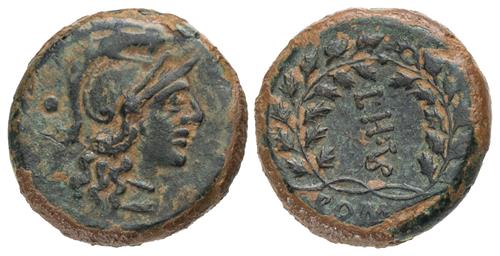
|
L. Hostilius Tubulus. 105 BC. Æ Uncia (16mm, 4.64 g, 12h). Rome mint.
Electronic Auction 458
Lot: 287. Estimated: $ 300
Selections from the Andrew McCabe Collection, Bronze
Sold For $ 750. This amount does not include the buyer’s fee.
Go to Live
|
|
L. Hostilius Tubulus. 105 BC. Æ Uncia (16mm, 4.64 g, 12h). Rome mint. Helmeted head of Roma right; • (mark of value) to left / L•H•(TVB) downward within wreath; below, ROMA. Crawford 315/1; Sydenham –; Type as RBW 1166. Attractive dark green patina with earthen highlights/deposits. Good VF. Very rare.
From the Andrew McCabe Collection. Ex RBW Collection Duplicate; Goodman Collection (Triton I, 2 December 1997), lot 1135 (with Goodman’s ticket) .
The purpose of striking unciae at such a late time period remains a mystery. While many surviving examples, such as this one, are in good preservation, I have seen others that are well worn, suggesting they were more than just a symbolic or donative issue. Perhaps they were useful for a specific government purpose, such as providing exact change when purchasing corn dole, or as a necessary low value coin in a military camp environment. Michael Crawford in RRC makes clear that the Romans had no interest whatsoever in providing small change to enable efficient market functioning. Where it was provided, it likely related to a needed government or military function, now lost in time. Alternatively, perhaps we have the conventional narrative wrong and these coins are indeed symbolic of government care (albeit sporadic) for the functioning of low level markets. However, the vast quantities of imitative local small change (cf. various articles by Clive Stannard) suggests otherwise, and the mystery of this and similar late unciae or semunciae remains. [Andrew McCabe]
Closing Date and Time: 18 December 2019 at 11:35:20 ET.
All winning bids are subject to a 18% buyer’s fee.
|
